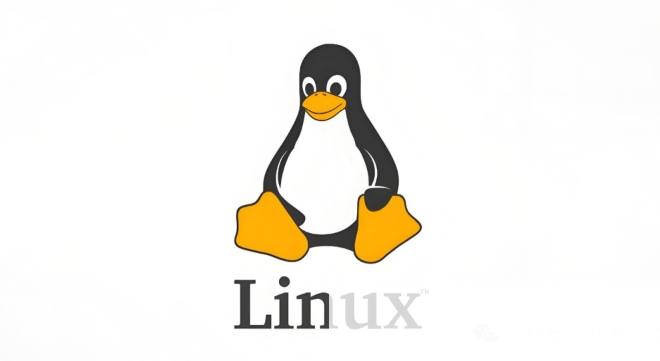Choose compatible hardware like a low-power CPU, 4–8 GB RAM, NAS-rated HDDs, and Gigabit Ethernet. 2. Install a suitable Linux distribution such as OpenMediaVault or Ubuntu Server for ease of use and strong support. 3. Configure storage using RAID 1/5/6 or ZFS for data redundancy and integrity, creating arrays with tools like mdadm or ZFS on Linux. 4. Enable network sharing via Samba for cross-platform access or NFS for Linux-only environments. 5. Enhance functionality by adding SSH, rsync, Docker, SnapRAID, and cron jobs for automation and app hosting. 6. Secure the system by keeping it updated, using strong passwords, enabling a firewall, and isolating services if exposed to the internet. 7. Monitor disk health with smartmontools, schedule regular checks, and track system performance to ensure long-term reliability. Building a Linux NAS provides full control, cost savings, and customization, resulting in a powerful, flexible, and secure storage solution for home or small office use.

Building a NAS with Linux is a cost-effective and flexible way to create a centralized storage solution for your home or small office. Unlike commercial NAS devices, a Linux-based NAS gives you full control over the software, security, and features—like RAID, remote access, backups, and media serving—without vendor lock-in.

Here’s how to build a reliable and functional NAS using Linux.
1. Choose Your Hardware
You don’t need high-end gear—a repurposed old PC, mini-ITX build, or even a Raspberry Pi (for lightweight use) can work.

Key components:
- CPU/Motherboard: Modern low-power CPUs (like Intel Celeron or AMD Ryzen Embedded) are ideal.
- RAM: 4–8 GB is sufficient for basic NAS use. More helps if running Docker or ZFS.
- Storage: Use 3.5" SATA HDDs for capacity. SSDs are optional for cache or OS.
- Network: Gigabit Ethernet (or 10GbE if you want high throughput).
- Power Supply: Reliable and efficient, especially if running 24/7.
Tip: Use drives designed for NAS (e.g., WD Red, Seagate IronWolf) for better reliability and vibration resistance.

2. Pick a Linux Distribution
Some distros are tailored for NAS use:
- Ubuntu Server – User-friendly, great community support.
- Debian – Stable and lightweight, excellent for headless servers.
- OpenMediaVault (OMV) – Debian-based with a web UI, perfect for beginners.
- Proxmox – If you want to run NAS in a VM or container alongside other services.
- TrueNAS Core (FreeBSD) – Not Linux, but worth mentioning for ZFS enthusiasts.
For most users, OpenMediaVault or Ubuntu Server are solid starting points.
3. Set Up Storage: RAID and Filesystems
Decide how to protect your data.
RAID Options:
- RAID 1 (mirroring): Simple, good for 2 drives.
- RAID 5/6: Needs 3 drives, protects against 1 or 2 drive failures.
- ZFS (via ZFS on Linux or TrueNAS): Advanced features like snapshots, compression, and self-healing.
Use mdadm for software RAID or ZFS for more advanced data integrity.
Example: Create a RAID 1 array:
sudo mdadm --create --verbose /dev/md0 --level=1 --raid-devices=2 /dev/sda1 /dev/sdb1 sudo mkfs.ext4 /dev/md0
Mount it and add to /etc/fstab for auto-mount on boot.
4. Enable Network Sharing
Make your storage accessible over the network.
Samba (for Windows/macOS/Linux): Install and configure Samba to share folders:
sudo apt install samba
Edit /etc/samba/smb.conf:
[Media] path = /mnt/storage/media browseable = yes writable = yes valid users = nasuser
Create a user:
sudo smbpasswd -a nasuser
Restart Samba: sudo systemctl restart smbd
Now you can access \\your-server-ip\Media from Windows or smb://your-server-ip/Media on macOS/Linux.
NFS (for Linux clients):
Better performance for Linux-to-Linux file sharing. Install nfs-kernel-server and export directories in /etc/exports.
5. Add Useful Services
Enhance your NAS with additional tools:
- SSH: Remote management (
sudo apt install openssh-server) - rsync: Automated backups
- SnapRAID or MergerFS SnapRAID: For flexible, non-RAID redundancy
- Docker: Run apps like Plex, Nextcloud, or Bitwarden
- Cron jobs: Schedule regular backups or scrubs
Example: Use rsync to back up your laptops nightly.
6. Secure Your NAS
Security is often overlooked in home NAS setups.
- Keep the system updated:
sudo apt update && sudo apt upgrade - Use strong passwords and disable root SSH login
- Set up a firewall (
ufw):sudo ufw allow ssh sudo ufw allow samba sudo ufw enable
- Consider a VLAN or isolated network if exposing to the internet
- Use Let’s Encrypt if running a web UI (like OMV) externally
7. Monitor and Maintain
- Check disk health with
smartmontools:sudo smartctl -a /dev/sda
- Schedule regular filesystem checks or ZFS scrubs
- Monitor temps and disk usage (tools like
ncdu,htop, or Grafana Prometheus)
Building a Linux NAS gives you flexibility and transparency. While it takes more effort than buying a Synology or QNAP, you’ll learn more, save money, and avoid artificial limitations.
With the right setup, your Linux NAS can serve files, host backups, stream media, and even run lightweight apps—quietly and reliably in the corner of your home.
Basically, it's a small server that works for you, not the other way around.
The above is the detailed content of Building a NAS (Network Attached Storage) with Linux. For more information, please follow other related articles on the PHP Chinese website!

Hot AI Tools

Undress AI Tool
Undress images for free

Undresser.AI Undress
AI-powered app for creating realistic nude photos

AI Clothes Remover
Online AI tool for removing clothes from photos.

Clothoff.io
AI clothes remover

Video Face Swap
Swap faces in any video effortlessly with our completely free AI face swap tool!

Hot Article

Hot Tools

Notepad++7.3.1
Easy-to-use and free code editor

SublimeText3 Chinese version
Chinese version, very easy to use

Zend Studio 13.0.1
Powerful PHP integrated development environment

Dreamweaver CS6
Visual web development tools

SublimeText3 Mac version
God-level code editing software (SublimeText3)

Hot Topics
 How to limit user resources in Linux? How to configure ulimit?
May 29, 2025 pm 11:09 PM
How to limit user resources in Linux? How to configure ulimit?
May 29, 2025 pm 11:09 PM
Linux system restricts user resources through the ulimit command to prevent excessive use of resources. 1.ulimit is a built-in shell command that can limit the number of file descriptors (-n), memory size (-v), thread count (-u), etc., which are divided into soft limit (current effective value) and hard limit (maximum upper limit). 2. Use the ulimit command directly for temporary modification, such as ulimit-n2048, but it is only valid for the current session. 3. For permanent effect, you need to modify /etc/security/limits.conf and PAM configuration files, and add sessionrequiredpam_limits.so. 4. The systemd service needs to set Lim in the unit file
 Comparison between Informix and MySQL on Linux
May 29, 2025 pm 11:21 PM
Comparison between Informix and MySQL on Linux
May 29, 2025 pm 11:21 PM
Informix and MySQL are both popular relational database management systems. They perform well in Linux environments and are widely used. The following is a comparison and analysis of the two on the Linux platform: Installing and configuring Informix: Deploying Informix on Linux requires downloading the corresponding installation files, and then completing the installation and configuration process according to the official documentation. MySQL: The installation process of MySQL is relatively simple, and can be easily installed through system package management tools (such as apt or yum), and there are a large number of tutorials and community support on the network for reference. Performance Informix: Informix has excellent performance and
 How to adjust mysql into Chinese interface? Easy to set the Chinese language environment of mysql
Jun 04, 2025 pm 06:36 PM
How to adjust mysql into Chinese interface? Easy to set the Chinese language environment of mysql
Jun 04, 2025 pm 06:36 PM
To tune MySQL into a Chinese interface, it can be implemented through MySQLWorkbench or command line tools. 1) In MySQLWorkbench, open "Preferences", select the "Appearance" tab, and then select "Chinese(Simplified)" in the "Language" drop-down menu, and restart. 2) When using command line tools, set the operating system locale variables, such as using "exportLANG=zh_CN.UTF-8" on Linux or macOS, and then run the mysql client.
 How does resource usage (CPU, memory) differ between Linux and Windows?
Jun 05, 2025 am 12:13 AM
How does resource usage (CPU, memory) differ between Linux and Windows?
Jun 05, 2025 am 12:13 AM
Linux and Windows have their own advantages and disadvantages in CPU and memory usage: 1) Linux uses time slice-based scheduling algorithms to ensure fairness and efficiency; Windows uses priority scheduling, which may cause low-priority processes to wait. 2) Linux manages memory through paging and switching mechanisms to reduce fragmentation; Windows tends to pre-allocate and dynamic adjustment, and efficiency may fluctuate.
 How does the cost of ownership differ between Linux and Windows?
Jun 09, 2025 am 12:17 AM
How does the cost of ownership differ between Linux and Windows?
Jun 09, 2025 am 12:17 AM
Linux's cost of ownership is usually lower than Windows. 1) Linux does not require license fees, saving a lot of costs, while Windows requires purchasing a license. 2) Linux has low hardware requirements and can extend the service life of the device. 3) The Linux community provides free support to reduce maintenance costs. 4) Linux is highly secure and reduces productivity losses. 5) The Linux learning curve is steep, but Windows is easier to use. The choice should be based on specific needs and budget.
 How does the performance of I/O operations differ between Linux and Windows?
Jun 07, 2025 am 12:06 AM
How does the performance of I/O operations differ between Linux and Windows?
Jun 07, 2025 am 12:06 AM
LinuxoftenoutperformsWindowsinI/Operformanceduetoitscustomizablekernelandfilesystems,whileWindowsoffersmoreuniformperformanceacrosshardware.1)LinuxexcelswithcustomizableI/OschedulerslikeCFQandDeadline,enhancingperformanceinhigh-throughputapplications
 How to install Linux alongside Windows (dual boot)?
Jun 18, 2025 am 12:19 AM
How to install Linux alongside Windows (dual boot)?
Jun 18, 2025 am 12:19 AM
The key to installing dual systems in Linux and Windows is partitioning and boot settings. 1. Preparation includes backing up data and compressing existing partitions to make space; 2. Use Ventoy or Rufus to make Linux boot USB disk, recommend Ubuntu; 3. Select "Coexist with other systems" or manually partition during installation (/at least 20GB, /home remaining space, swap optional); 4. Check the installation of third-party drivers to avoid hardware problems; 5. If you do not enter the Grub boot menu after installation, you can use boot-repair to repair the boot or adjust the BIOS startup sequence. As long as the steps are clear and the operation is done properly, the whole process is not complicated.
 How to enable the EPEL (Extra Packages for Enterprise Linux) repository?
Jun 17, 2025 am 09:15 AM
How to enable the EPEL (Extra Packages for Enterprise Linux) repository?
Jun 17, 2025 am 09:15 AM
The key to enabling EPEL repository is to select the correct installation method according to the system version. First, confirm the system type and version, and use the command cat/etc/os-release to obtain information; second, enable EPEL through dnfinstallepel-release on CentOS/RockyLinux, and the 8 and 9 version commands are the same; third, you need to manually download the corresponding version of the .repo file and install it on RHEL; fourth, you can re-import the GPG key when encountering problems. Note that the old version may not be supported, and you can also consider enabling epel-next to obtain the test package. After completing the above steps, use dnfrepolist to verify that the EPEL repository is successfully added.







